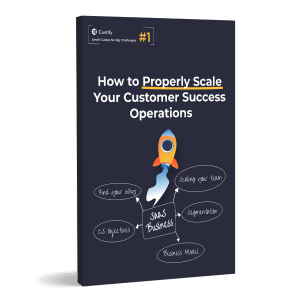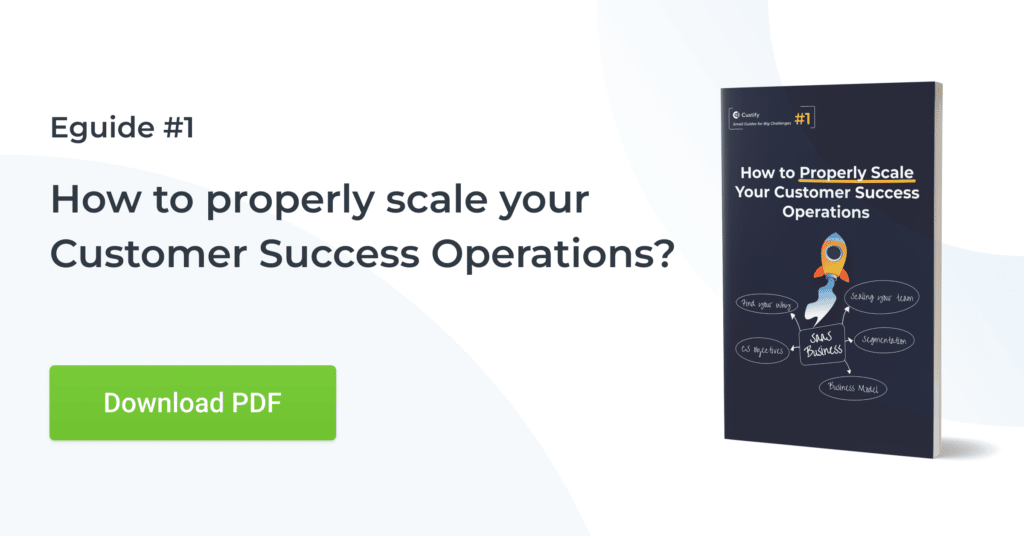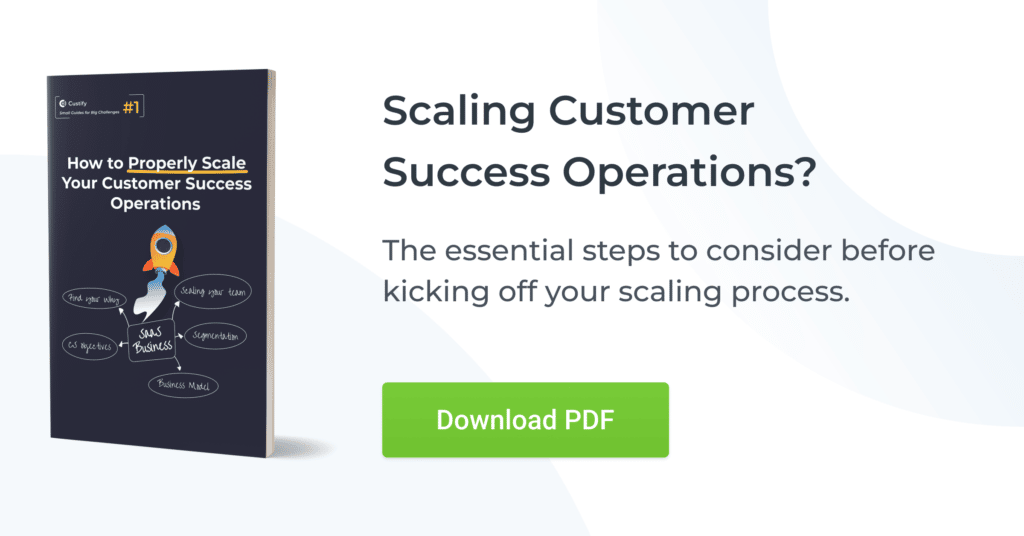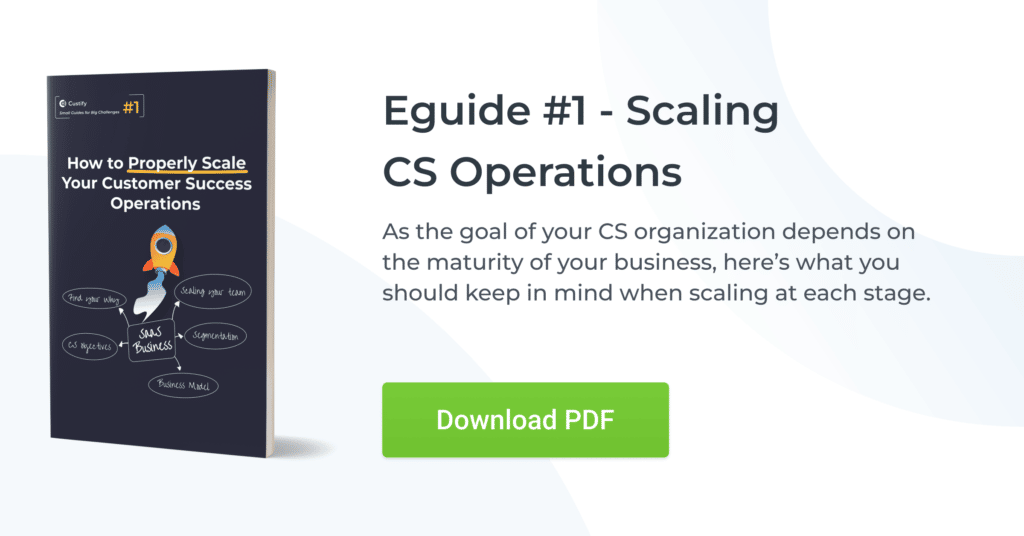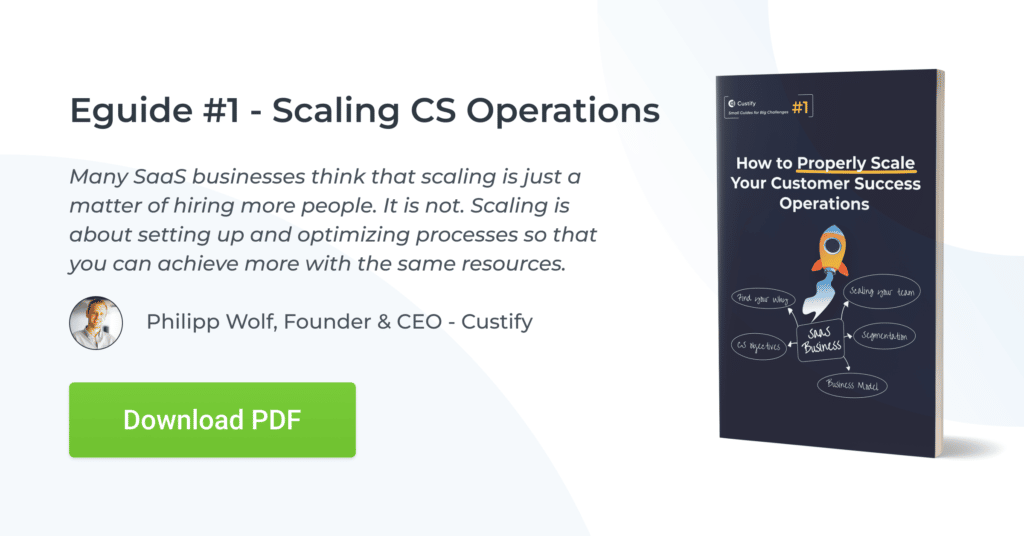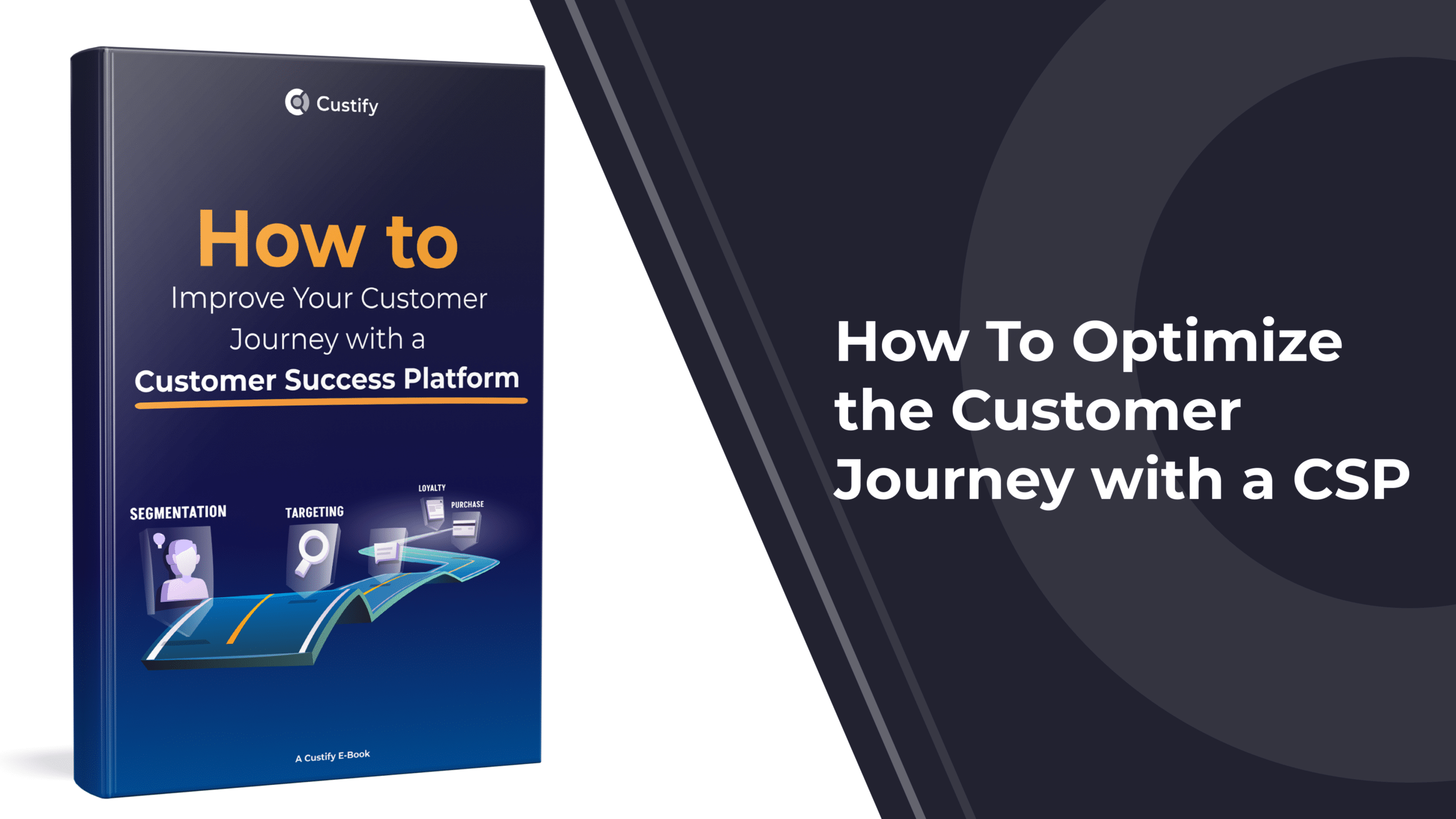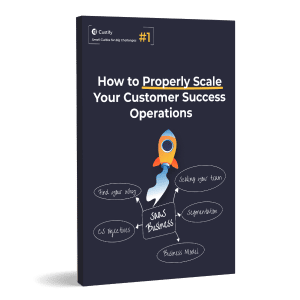Introduction
If you’re here, you probably know how important customer success is for businesses. You might also already have customer-facing roles within your organization, and you’re already seeing the benefits of having a CS strategy in place. You want more of these good results; you want to scale customer success. That’s awesome! Here are the steps you should take:
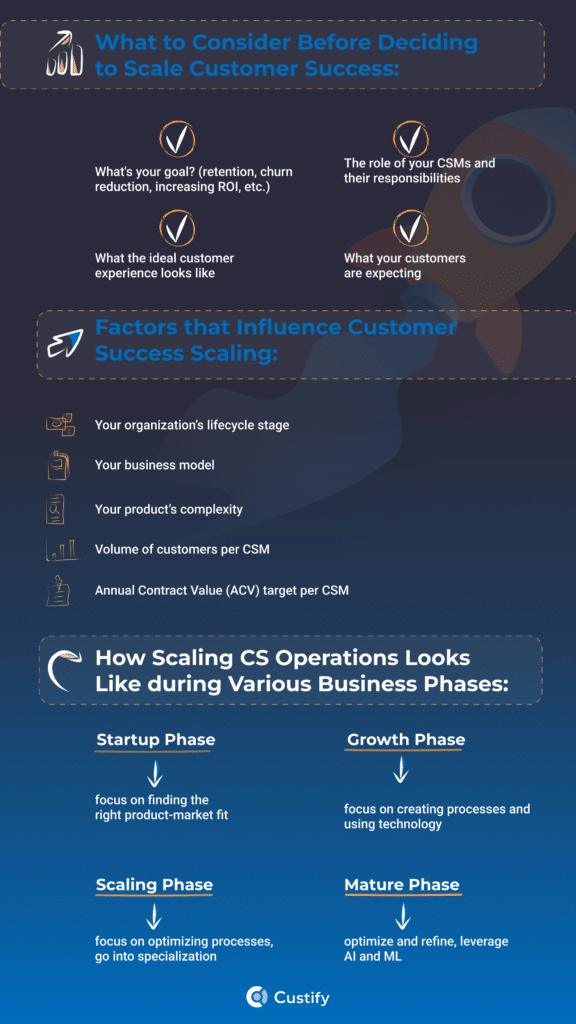
What to Consider Before Scaling Customer Success
Scaling doesn’t mean hiring more CSMs. What you actually have to do is optimize your processes so that you can achieve more with the same resources. Efficiency is crucial for scaling – if your efforts don’t decrease as you grow, you’re not actually scaling.
With this in mind, here’s what you should consider before scaling your CS operations:
1. What’s Your Goal? What Do You Want to Achieve?
Customer success can help you achieve a wide variety of goals, such as increasing retention rates and reducing churn, increasing revenue by identifying upsell and cross-sell opportunities, or improving your customers’ experience. But you have to be crystal clear on what you’re trying to achieve and how your CS strategy fits within the overall company strategy.
So try to answer a few simple questions:
• What is the scope of customer success in your organization?
• What do you want to achieve?
• Why do you want to do it?
• What are your expectations?
The best way to do this is to have a veteran CS consultant work with the senior management team to, in effect, recode your company’s DNA for customer success.
2. Define the Role of Customer Success in Your Organization
Once you define your goal, it’s time to decide what CSMs should do. Should they do the implementation? Should they onboard new customers? Should they train customers on how to use your product to achieve the best results? Should they get involved in the pre-sales process?
At this point, you need to determine how CS will integrate with the rest of your organization.
And as Greg McKeown explains for Aspire Business Development: “When you’re not focused, strategic, and accountable for how you spend your time and efforts, the end result is going to be lots of wasted effort, false progress, frustration, and reduced success.”
3. Consider Your Ideal Customer and the Ideal Customer Experience
There’s a dedicated article on our blog on how segmenting your customers can help your SaaS business achieve customer success, so I won’t insist on this. Instead, I will point out what you should do after segmenting your customer base – for some segments, you can use low-touch, while for others, you can use high-touch and maybe even add some tech touch.
Keep in mind that low-touch doesn’t mean low value. A few tactics you can employ to provide value en masse with a minimum effort are:
- Training videos
- Knowledge base articles
- Email drips with tips on how to use your product for specific use cases.
Combining these three tactics can help you replace 1:1 sessions with dedicated CSMs where they answer common questions, thus freeing up a big chunk of their time. Instead, you can “reserve” these sessions for more complex issues, thus providing value to more customers using the same resources.
4. One-size-doesn’t-fit-all
Still on the topic of segmentation, make sure that when you segment your customers, you do it based on their experience and not their spend. Creating segments based on ARR alone where the highest paying customers get a high-touch experience, the lowest paying customers get a version of tech touch, and the ones in the middle get a variation is an outdated tactic.
Some customers are happy with self-service and don’t require a 1:1 with a CSM. Therefore, segments should align the profile of your customer with the experience that they should be getting. Your segmentation strategy can still include the ARR threshold, but it should also (heavily) account for customer preferences and growth potential, as well.
Factors that Influence Customer Success Scaling
In your decision to scale customer success operations, you should consider the following factors:
- Your organization’s lifecycle stage – scaling looks different for startups than it does for mature companies
- Your business model – scaling product-led companies is also different from scaling sales-led ones
- Your product’s complexity – the more complex your product is, the fewer accounts a CSM can manage
- Volume of customers per CSM – there’s no such thing as “1 CSM per $2M/ARR” or “20 on the low end; 200 on the high end”; this ratio depends on the unique circumstances of your business
- Annual Contract Value (ACV) target per CSM – just like the volume of customers per CSM, this KPI also depends on the unique circumstances of your business (for example, the type of organizations you target) and varies for each customer segment.
This is, of course, a short summary. We go into much more detail about influencing factors in the linked eguide.
How Scaling CS Operations Looks Like during Various Business Phases
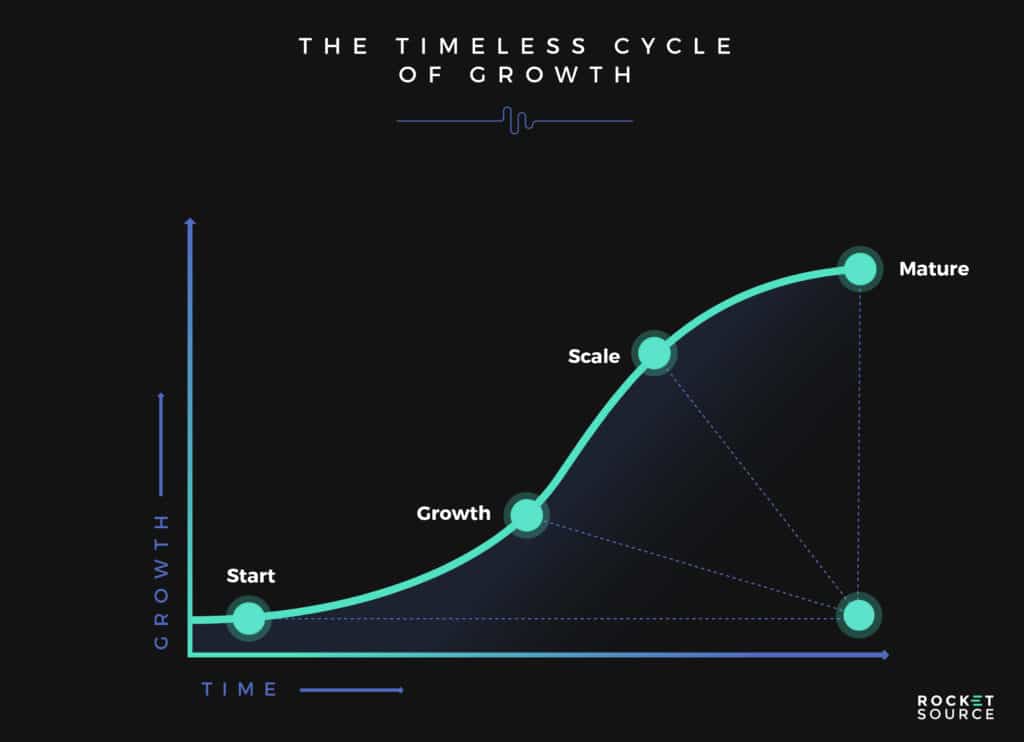
You can’t compare a startup with a small team, limited resources, and limited customer data to a mature business with tens of employees and a well-set-up buyer journey and sales funnel. Here’s how the goal of an organization changes depending on its growth stage:
Scaling CS Operations in the Startup Phase
At this initial stage, you should be focusing on finding the right product-market fit. Most of the churn you’ll encounter now is due to the wrong fit.
Your CSMs are also “Jacks-of-all-Trades” – everyone does everything (onboarding, training, support, renewal, etc.). To move to the Growth stage and get ready to scale, you need to have processes and technology in place.
What to do:
• set up a workflow for managing customer requests;
• set up regular meetings to go over common issues and build fixes into your product roadmap;
• use customer support as a tool to learn more about your customers and improve your product.
What NOT to do:
• obsess over metrics.
• assign renewals to CS (yet) – at this stage, you probably don’t have a lot of renewals so Sales can own renewals and CSMs can focus on adoption and advocacy;
• let engineers build workarounds instead of solving issues. This saves you time now but will end up haunting you in the future
Find out more about what you should and shouldn’t do in your Startup phase by downloading our guide.
Scaling CS Operations in the Growth Phase
Now that your customer base is growing, you need to come up with ways to handle multiple accounts. This is also the moment to be thinking about hiring the first customer-facing role (not necessarily a CSM) that can remove the support load off of the rest of your team and using a CS solution instead of spreadsheets. It’s time to move from being reactive to being proactive and start building customer journey maps.
What to do:
• organize your communication channels and designate the main one;
• start using NPS to assess the quality of each interaction;
• start tracking metrics;
• expand the self-service documentation (blog articles, KB system, etc.);
• prepare the processes and flows for future CS operations;
• focus on acquiring as many customers as you can;
What NOT to do:
• churn prediction – at this stage, you don’t have enough data to identify patterns;
• ignore negative feedback – filter the feedback you get from customers and try to act on the negative comments.
Find out more about what you should and shouldn’t do in your Growth phase by downloading our guide.
Scaling CS Operations in the Scaling Phase
At this stage, you should be focusing on optimizing the processes you’ve built in the Growth phase and ensure they’re embraced by the rest of your team as well. This is also the moment to scale your support processes as the demand for support increases. Moreover, you can go into specialization as you have more than one customer-focused employee.
What to do:
• turn metrics into dashboards and analyze trends;
• start writing self-service documentation (if you have a solid number of customers, you should know what are the most common issues and FAQs);
• start adding additional communication channels;
• evolve to a tiered coverage model to handle more clients without overwhelming your CS team.
What NOT to do:
• focus on cost reduction. That time has passed. Now you need to invest;
• hacks, patches and workarounds – It was a bad idea in the beginning to rush development with such tactics, and it’s a worse one now.
Scaling CS Operations in the Mature Phase
Your biggest advantage is that you have historical data, and everything is in order in terms of processes and tools. Now, you can optimize and refine, grow your team of specialists, start building predictive models for each lifecycle stage, and leverage AI and ML to become more proactive.
What to do:
• leverage the power of technology and automation to optimize costs;
• tap into the predictive power of models;
• invest in permanent systems, team growth, and individual performance.
What NOT to do:
• tolerate an unhealthy team culture;
• lose customer focus (don’t get caught up in analyses and metrics).
Find out more about what you should and shouldn’t do in your Mature phase by downloading our guide.
Mistakes Organizations Make when Scaling CS
Like anything in business, scaling doesn’t come without challenges. Here are two frequent mistakes we see organizations make when scaling their customer success operations:
- They don’t put themselves in their customers’ shoes when thinking about product and user complexity. Just because you think your product is easy to use, doesn’t mean your customers agree. So take this into consideration when planning your strategy.
- They don’t understand where they fit into the customer’s puzzle, and they’re scaling incorrect processes or departments, which is inefficient.
Jennifer Chiang, author of The Startup’s Guide to Customer Success, has discussed the mistakes to avoid when scaling your CS operations during a recent webinar.
Scaling customer success refers to growing your business by using your resources efficiently, not just adding more CS reps mindlessly. Wherever you want to start (optimizing self-service, using automation, etc.), make sure that your actions bring value to your customers on their preferred channels. Happy customers mean more referrals and thus a happy business.
